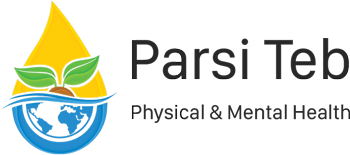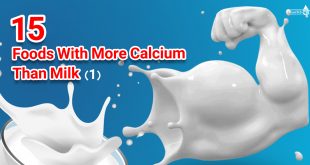New Guidelines Suggest Higher Doses of Vitamin D
Endocrine Society Says Vitamin D Deficiency May Be Common in U.S.
June 6, 2011 — Noting that vitamin D deficiency is “very common in all age groups,” new treatment guidelines call for many Americans to take more vitamin D than is currently recommended.
The guidelines, from the Endocrine Society, offer some contradictory advice. They say that virtually everyone in the U.S. should be taking vitamin D supplements, but that only those at risk for vitamin D deficiency should have their vitamin D blood levels checked.
Only those whose serum 25(OH)D blood levels are above 30 ng/mL are getting enough vitamin D. Lower levels are “insufficient,” and those with levels below 20 ng/mL are frankly deficient.
But much higher levels are better, says guideline committee chairman Michael F. Holick, MD, PhD, director of the vitamin D skin and bone research lab at Boston University.
“The committee decided that 30 ng/mL is the minimum level, and recommended 40 to 60 ng/mL for both children and adults,” Holick said at an online news conference.
So who’s at risk of vitamin D deficiency? Quite a few of us:
* Children of all ages
* Pregnant and nursing women
* Obese people
* Darker-skinned Americans, particularly those of African or Hispanic descent
* Anyone with a malabsorption syndrome, such as cystic fibrosis, Crohn’s disease, or inflammatory bowel disease
* Anyone who has had bariatric surgery
* Anyone with osteoporosis, osteomalacia, or an elderly person who’s had a fall or fracture
* People with chronic kidney disease
* People with liver failure
* People taking antiseizure medications, glucocorticoids, AIDS drugs, or antifungal drugs
* People with granuloma-forming disorders such as tuberculosis and sarcoidosis
And even more of us are at risk of vitamin D insufficiency, as studies find that it’s relatively common for people to have vitamin D levels below 30 ng/mL.
Few foods carry much vitamin D other than salmon and mackerel. Milk and some orange juice is fortified with small doses.
“So if you drank five or six glasses of fortified orange juice and ate salmon every day, you would get all you need,” Holick said.
The body makes its own vitamin D if the skin is exposed to direct sunlight. But too much time in the direct sun raises the risk of skin cancer — and using sunscreen cuts skin vitamin D production by 95%.
Why Take Vitamin D?
Nearly every cell in the body interacts with vitamin D. The activity of many genes — up to a third of the entire human genome — is affected by vitamin D.
There’s evidence that vitamin D deficiency may increase the risk of many diseases:
* Cancer, including colon, prostate, breast, and pancreatic cancer
* Autoimmune diseases, including type 1 and type 2 diabetes, rheumatoid arthritis, Crohn’s disease, and multiple sclerosis
* Infectious diseases such as flu
* Heart disease
However, there’s no hard evidence that taking vitamin D supplements prevents or treats any of these illnesses.
What the evidence does show is that vitamin D helps the body use calcium to prevent bone loss and to build stronger bones, and that vitamin D prevents falls in the elderly by improving muscle function.
A new study, reported at the annual meeting of the Endocrine Society by Weill-Cornell researcher Richard Bockman, MD, PhD, shows that people are seven times more likely to benefit from the bone drugs Actonel, Boniva, Fosamax, and Zometa if their vitamin D levels are at or above 33 ng/mL.
Why is there so little data on vitamin D and non-bone diseases? Only recently have researchers realized that vitamin D is not harmful at the new, higher doses. Few studies used enough vitamin D to raise blood levels of 25(OH)D above 30 ng/mL.
On the positive side, there is very little evidence that increasing vitamin D levels to 30 to 100 ng/mL is any harm to children or to adults — except in some people with granuloma-forming disorders or lymphoma.
Recommended Vitamin D Doses
Last November, the Institute of Medicine (IOM) released guidelines suggesting that most Americans and Canadians get enough vitamin D, and recommending modest doses of vitamin D supplements. The new treatment guidelines point to new data suggesting that the IOM recommendations “may be inadequate.”
The new guidelines recommend different doses of vitamin D for those at risk of vitamin D deficiency:
* Age 0 to 1 year: 400 to 1,000 International Units (IU) daily
* Age 1 to 18 years: 600 to 1,000 IU daily
* All adults over age 18: 1,500 to 2,000 IU daily
* Pregnant or nursing women under age 18: 600 to 1,000 IU daily
* Pregnant or nursing women over age 18: 1,500 to 2,000 IU daily
Because fat stores vitamin D, obese people may need to take two or three times the usual dose of vitamin D.
The guidelines recommend much larger doses of vitamin D, for a very limited time, for people trying to get their vitamin D levels back up to 30 ng/mL. Such doses should be taken under a doctor’s supervision.
The new guidelines, announced at the annual meeting of the Endocrine Society in Boston, will appear in the July issue of the Journal of Clinical Endocrinology and Metabolism.
 Parsi Teb Physical and Mental Health Journal
Parsi Teb Physical and Mental Health Journal 



